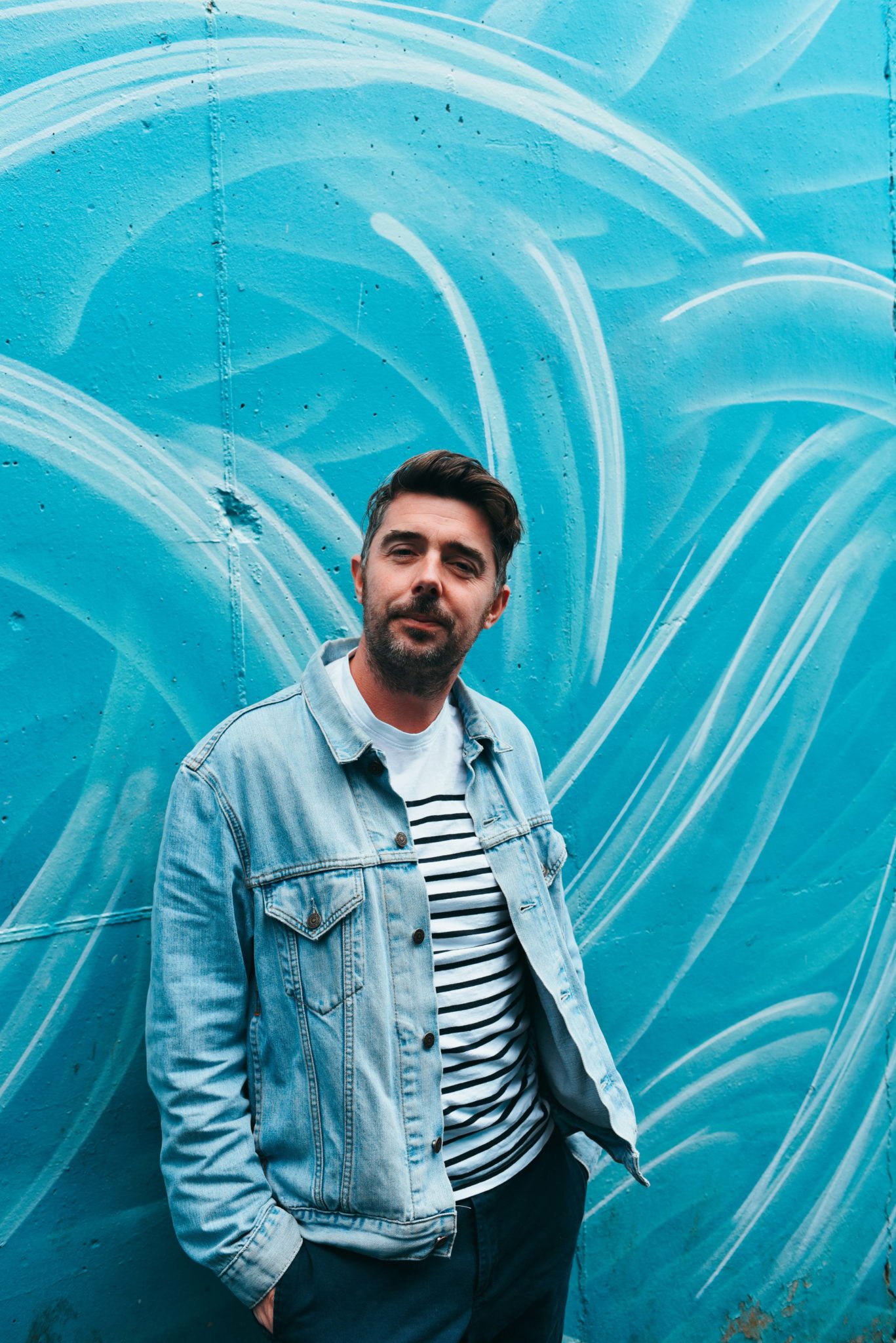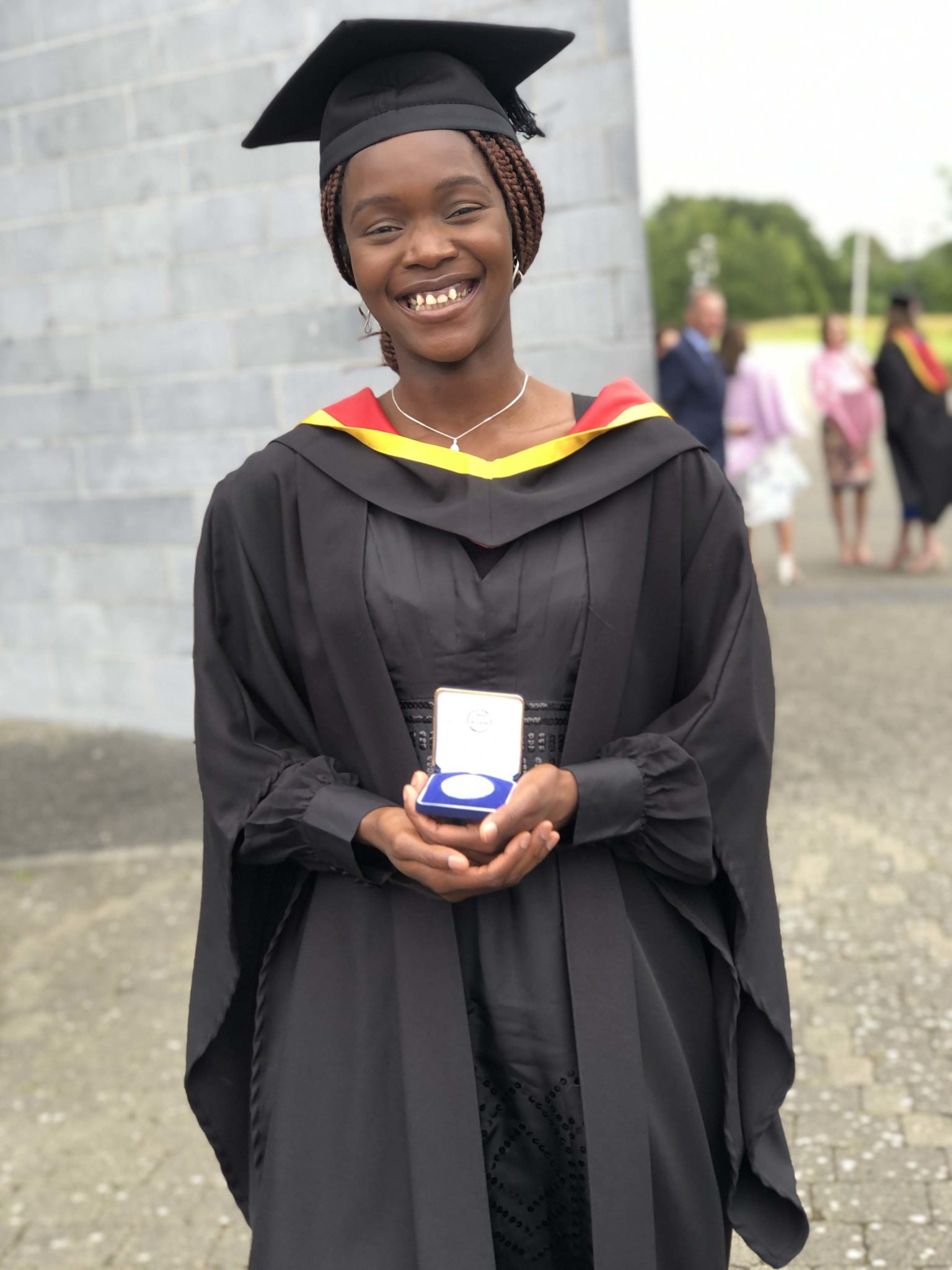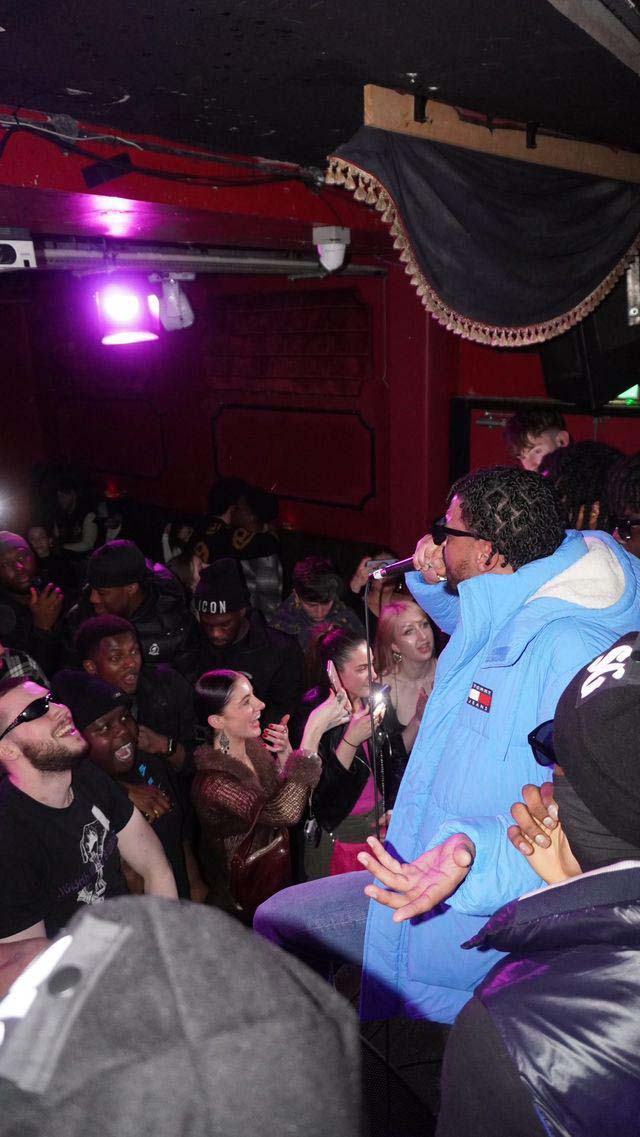- Opinion
- 26 Jul 23
Kevin Curran on his new novel Youth: "In the last census, Balbriggan had the youngest and most diverse population in the country. My line is, 'Balbriggan is Ireland’s future now'"

Having previously earned critical acclaim for the novels Beatsploitation and Citizens, Kevin Curran has now written the timely Youth, a compelling exploration of teen life, race and multiculturalism, set in Ireland’s most diverse town, Balbriggan, in North Co. Dublin.
In Kevin Curran’s new novel Youth, the four fascinating lead characters are drill rapper Angel; Princess, who has a fierce drive to escape humdrum suburbia; Dean, who craves an identity separate to his famous father; and Tanya, who attains online infamy after footage of her performing a sex act gets widely shared.
As a teacher at a Deis school in Balbriggan, Curran gets a unique view of modern youth culture. Certainly, it feels about time that a book like Youth was written.
“My first book Beatsploitation came out 10 years ago,” explains the softly-spoken author. “The narrator was a racist teacher, which I hope I’m not! There was also an African character who was an immigrant, who’d recently arrived in the country. He was then deported, and that was a real life experience of a student of mine. I then wrote a piece for the Times saying this was just the first black Irish character, there’ll be many more. And then everything went quiet.
“My school is unique, probably one of a kind, in that a Leaving Cert class of mine would have 50 percent black Irish kids. I had a story called ‘Saving Tanya’ that came out in 2015 that had a mixed-race kid, and the character of Tanya has made it into this book. I’d read that to my transition year students and they’d loved it, but the conversation would always come back to, ‘Why aren’t there more stories with people like us in them?’”
Ultimately, it came to the point where Curran felt he had to write the novel himself, and the idea for Youth was born.
“I think Balbriggan is an incredible place and hopefully you get that sense from the book,” he notes. “The school I teach in is amazing too: it’s a diverse, multicultural place where everyone gets on. Of course, we have our socioeconomic problems, but in terms of a being a melting pot, it’s remarkable, and the kids will tell you the same. So, you couldn’t ignore this. I started thinking that in 20 years time, people would say, ‘You were teaching in the one school in the country with this amazing mix, and you never thought of writing about it’.”

Kevin Curran. Copyright Miguel Ruiz.
Born out of a collection of short stories published in a variety of literary journals, Youth was eventually sculpted into a novel. Given that it addresses some of the most important issues currently facing Irish society, it’s surprising more people aren’t exploring similar subject matter.
“In the last census, Balbriggan had the youngest and most diverse population in the country,” explains Curran. “My line is, ‘Balbriggan is Ireland’s future now’. Especially what I’m experiencing in my school – this is where we’re going to be. If only people could see what I see every day. Everyone just gets on with it, there are no major cultural and societal differences. The kids happen to be black Irish, but like the kids in my book, they are born in Ireland.
“They’re Irish, they just happen to have parents who might have been from Congo or Nigeria. But they all get on and live their lives, and they have a sense of solidarity. It’s more so about class than about race. People don’t see this because they don’t know these types of characters, and I think this is another reason why people shy away from it – they’re afraid to go there. But I would see five people like Princess every year, for the last 10 or 12 years.”
WILDLY TALENTED
In his accompanying notes for Youth, Kevin Curran suggests that too often, conversations around these vital topics gets caught up in a secondary academic discourse, imported from the US. Unfortunately, such discussions usually devolve into pointless culture war exchanges.
“In 2018, Emma Dabiri did a magazine on black Irish culture in the Irish Times,” says the author. “She said something amazing, which was, ‘I’ve let Ireland define its own past, in setting an inspiring example of what a prosperous, inclusive, dynamic society can look like’. And she’s right – we’re not starting off with the post-colonial hangover of the UK. We don’t have America’s past of slavery and segregation, yet we’re taking on all their ways of seeing things and dealing with it.
“Whereas, we should be coming at it from a different angle. Now, don’t get me wrong – of course we have our issues. But when you deal every day with, as Zadie Smith puts it, the ‘intimate language of a locality’ – be it a school or a society – you see that the kids don’t really care. Especially at senior level, they’re more interested in whether they’re getting a H1 in English, or whether their friend is going out for dinner with them later on.”
Like many aspects of the book, the character of Angel comes from first hand experience, with Curran having taught several aspiring drill rappers in the past.
“I happened upon it five years ago,” he says. “AV9 are a drill group and I know them all. They’d be getting slagged in school, and I’d be looking at their videos going, ‘You can only talk about stabbing people for so long before it gets boring’. They’d say, ‘We know sir, but you have to get your market, and then move into hip-hop from there’. It’s all a façade in a way, though they do have their issues.
“But I was aware of this, and I was looking at them with serious admiration. While they were just out of school, one song called ‘No Hook’ got a million views within the space of four or five months. It’s them with a camera in their estate in Balbriggan. I remember being in a band when I was 16, and we’d be embarrassed having one bloody picture taken. These lads are making the videos and people are singing the lyrics back to them everywhere they go.
“So I would have followed them, talked to them and seen how they were getting on. I’d know one or two people in A92 as well. The likes of Chuks from AV9, he’d get 136,000 listens a month on Spotify. And AV9 would get 300,000, it’s mental. No one was tapping into it, so I was lucky to be in that place at that time.”
It’s amazing how wildly talented these drill artists are at such a young age.
“Not only that,” adds Kevin. “Everyone in the literary world is hand-wringing about the future of the novel. Someone asked me why there are no rock star novelists, and I said, ‘Because they’re doing it through podcasts and music’. The lads who I know who have an amazing imagination and an incredible way with words – why would you spend six years writing a book?
“They can put out a song in two months and it gets a million views. It’s what’s open and available to them, and they’re expressing themselves as they see best. They’re describing where they live and I really admire what they do. I hope that comes across in the book.”
APPROACHED INAPPROPRIATELY
Another intriguing element in Youth is the way it dives into social media and the havoc it can cause in modern teen life.
“More so with the girls than the lads,” says Kevin. “I don’t begrudge them this, it’s what they’ve grown up with, but their phones are like a comfort blanket. Because I’m old, I can see that it’s not a comfort blanket, it’s smothering them. The other line I use is that the phone is like a life ring, but it never brings them to the shore, it keeps them out of their depth. It’s become so natural to turn to their phones for this kind of security.
“I see how it does comfort them. You have girls who need to be on their own, and the first thing they do is take the phone out and start scrolling. I’ve literally asked them what they’re looking at, and they’ll say, ‘Nothing, just scrolling’. It’s somewhere they can go and not worry about the world. And very few of them actively post, they only go to watch – it’s their TV.
“In ‘Saving Tanya’, she does a sex act that ends up online, and I wrote that seven years ago. But I’ve read that story every year with my TYs (Transition Years), and they always say, ‘We know Tanyas, who actively go out and do this to become known and achieve notoriety’. That hasn’t lessened as the years have gone on. If anything, the kids just shrug their shoulders and say, ‘Oh yeah, I know a Tanya’.”
Presumably, this is all feeds into the worrying amount of anxiety experienced by kids these days.
“Yeah, and again, especially with the girls,” says Curran. “The demands on the girls through social media plays out in their anxiety, and more so since Covid. In the book, Dean is with a girl in one scene, and he’s worried about all the things he has to do. The flip side is, the girls are also aware of this, and also of the expectations that are put on them as well. I know it’s funny for Dean, and it shows how ridiculous the whole situation is. But they aren’t just male expectations – they’re female expectations.
“You definitely see that play out in teenagers. I’m an English teacher, so we’d have conversations like this all the time. You might have a group of 15 girls who are 18, and say to them, ‘Hands up who likes social media’. None of them do, but all of them are on it. Then you say, ‘How many of you have been approached inappropriately through private messages?’ All of them.
“They’d all tell you, ‘They’re men with wives and children’. It’s insane. They bat it off and say, ‘Sir, that’s the way it is’. They deal with it, but it must be hard, constantly being objectified and pestered like that.”
Finally, Curran is excited to note that the audio version of the book has the feel of a play, with different actors voicing the lead protagonists.
“The audio book is amazing,” he enthuses. “Princess is played by Florence Adebambo, who was in the RTE series Taken Down. I met her and talked for about an hour before we did the recording. She said, ‘When I got this script, I couldn’t believe it, because I’ve never read anything likes this before in Ireland. All I’ve been given so far are direct provision stories. But this is just me going through my life’.
“I was a bit nervous when she was reading it, but she felt it was amazing to have a character like this. Jordanne Jones from Metal Heart plays Tanya, and she also said, ‘How the hell do you know these things?’”
• Youth is out now, published by Lilliput Press.

Kevin Curran. Copyright Miguel Ruiz.
“A World Of Its Own”
A selection of Kevin Curran’s former students talk about what makes Balbriggan unique
Debola Shomoye
Qualified doctor, in training to become a surgeon
Balbriggan is a conglomerate of voices and personalities, along a beautiful sandy shore. I savour walks through the town, which has so many opportunities for laughter and conversation. As residents, we form strong bonds by embracing our similarities and differences. In unison, we stand boldly atop the county’s north.

Debola Shomoye
Cliodhna Travers
DCU journalism student
Turning any corner and eventually being led back to the square, or the beach – the simple joy it brings. The feeling of home as your train greets the lighthouse. Never really understanding why call we each other ‘our’, but the term of endearment never leaving the tip of our tongue.

Cliodhna Travers
Snowy Santana
Member of hip-hop group The Santanas
Balbriggan is unique because of how unapologetic the people are. Despite being a small town – though it’s growing by the day – it’s a world of its own. It has its own style, culture and one-of-a-kind aesthetic. Just like any other place, it has its problems, but I can assure you the people wouldn’t want to be from anywhere else.

Snowy Santana
Tobi Isaac
Photographer who shot Youth cover
“Live life young king.” To the community that raised me, the landscape which encouraged me, the stories and people who inspired me, thank you. From Instagram posts to billboards and book covers. From boys to men. From dreams… to reality. All made possible through a mentality fostered in the care of a special little town in North County Dublin called Balbriggan. Growing up and living there contributed so much to who I am today and the success I have been fortunate enough to see. Because of that, it will always be home.
RELATED

- Opinion
- 16 Oct 25
Can You Hear Us?: Five Voices from Gaza

- Opinion
- 12 Oct 25
The End Is Nigh: "AI is designed to make a killing, sometimes literally"

- Lifestyle & Sports
- 11 Oct 25








